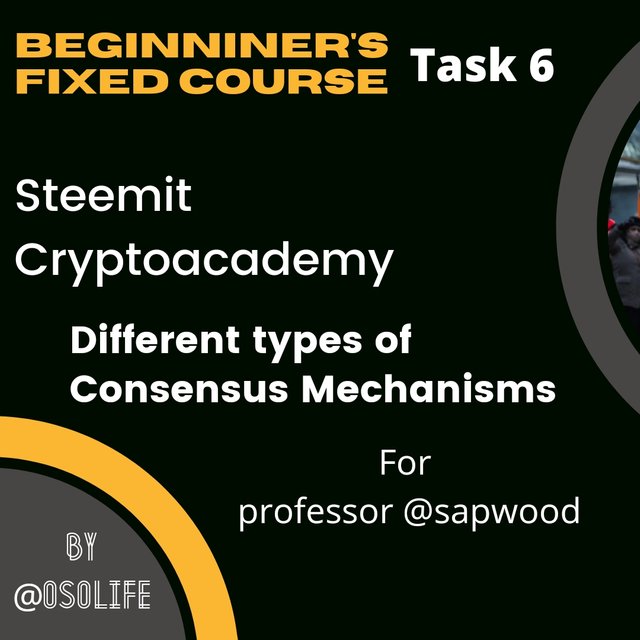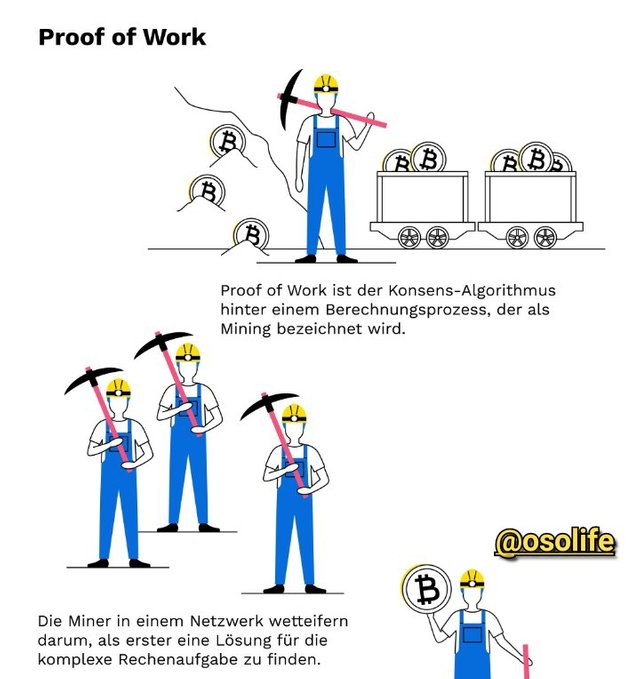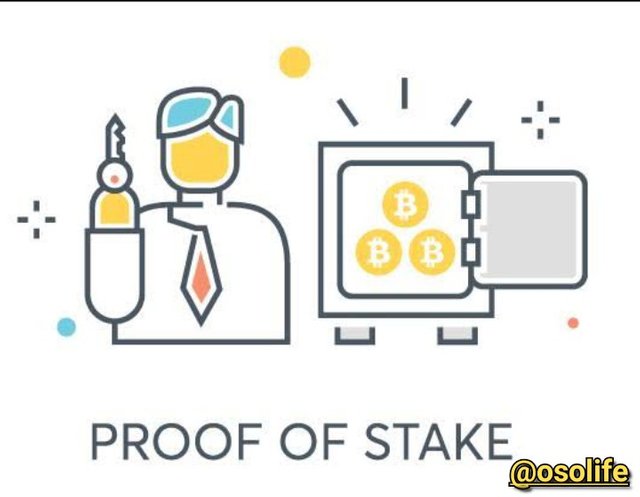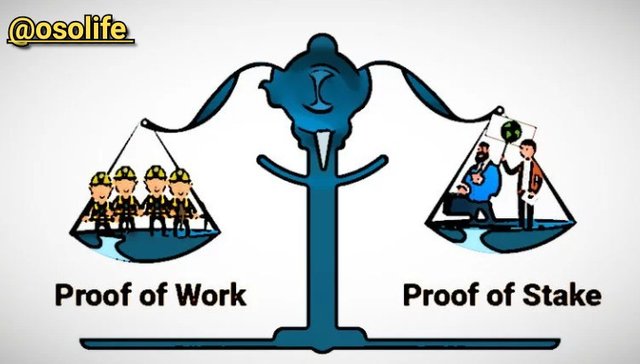
QUESTIONS
[1♧]Explain the difference between PoW & PoS
[2♧]Advantages & Disadvantages?
[3♧]Which one is better in scaling Capacity? Examples?
[1♧]EXPLAIN THE DIFFERENCE BETWEEN POW & POS?
Blockchain improvements has really grown to be noticeable world wild, in a couple of years, and are currently bigging to rule over the Fiat money, the blockchain is a unified decentralized record that is already made and it effectively connected with the use of advanced cryptographic strategies. It lacks the requirement for any authority through a collaborative framework that allows members of the community to authorize records from their agreement.
An agreement or settlement is reached via Consensus mechanisms.

These consensus Mechanisms are structure or frameworks installations that maintain its trust among members/hubs withinside the organization. These are some components through which the hubs at the decentralized organization can be able to check and obtain the records generated in the blockchain. There are numerous varieties of systems agreement which has been made already and are applied in the blockchain system. let's take a peek at the [PoW] Proof-of-Work structure and the [PoS] Proof-of-Stake structure.
Proof-of-Work [PoW]

The Proof-of-Work Settlement component is a procedure through which blocks on a
blockchain is validated and generated.The [PoW] structure was introduced with the first actual digital money: [BTC] Bitcoin. It calls for block validators, known as excavators, to deal with complicated numerical puzzles, and to track down the proper hash] which contains alphabets and numeric code interesting to every hinder for the existing square.
- Undertaking those mind-boggling puzzles and finding out the proper hash, for some
part,it consumes a selected measure of time and calls for a brilliant deal of calculating ability to be consumed. In recovery for their own time and enrolling power, the diggers are repaid with a certain measure of the virtual/ digital currency, exactly as exchange payments.
- Since it makes use of a massive load of registering energy and power, excavators may be relied on to authorize hinders correctly and not to manipulate any of the data within the squares.
Proof-of-Stake (PoS)

The Proof-of-Stake settlement factor is one greater means of reaching an agreement which was improved by Ethereum.
With the framework, this square validator is not required to address any conditions, instead, the block validators are regarded dependable due to the fact of the stake which they have within the framework.
Along the framework members pledge a portion in their earn digital currency, to be allowed to authorize blocks at the blockchain. The greater noteworthy the sum marked, and the greater it is marked for, the better the probability of authorizing squares.
Differences between PoW and PoS
| Pos | PoW |
|---|---|
| Block approval probably relies upon the speed or rate and nature of the systems of the validators. | Block approval probably relies upon the measure of the cryptographic money captioned and also the measure of the duration which it's been marked for |
| it uses a very brilliant measure of analytical power and cool electrical energy | It uses appreciably low computational power and nice electrical energy [up to 10% or less] |
| Block validators or the diggers are normally paid back in cryptographic money, simply for the conveying of the numerical puzzles. | Block validators earn network fee as an award depending on the quantity they have got marked. |
| Identifying the authorization of labour apart from time, thereafter this procedure is slow | It moves faster more than the proof of work procedure |
| To authorize a 51% invasion one might need to claim 51% of all computational power applied in mining | To oversee a 51% invasion one might need to possess almost 51% of the digital money. |
[2♧] ADVANTAGES & DISADVANTAGES OF POW & POS?
Proof-of-Work (PoW)
Advantages
The authorization of the Labour model of consensus is very challenging and expensive to shove as the result of avoiding programmers and probably destructive specialists.
The diggers are paid back with a particular measure of a digital currency and that's the means through which new units of digital money are introduced in the framework
It's incredibly decentralized and creates a non-trust framework for computing exchanges.
The diggers are also paid back with exchange charges through handled squares.
Disadvantages
The authorization of work procedure makes use of a massive measure of computational energy and electrical power.
It charges a terrific deal to hold up with and organize.
its framework possesses powerless versatility and for the reason, its exchange seems to be slowthorization of work procedure is a very lethargic technique due to the fact that they need to reconcile the complex numerical puzzles.
It calls for the purchase of weighty high priced equipment for mining.
**
Proof-of-Stake (PoS)
Advantages
It's more flexible than the authorization of the work procedure making about greater exchange speeds.
One does not have to buy weighty high priced equipment to begin approving squares.
The authorization of stake procedure consumes extensively much less power and energy than the confirmation of work procedure.
Disadvantages
Coins are captioned briefly and it can not be applied inside that timeframe
It possesses a higher tendency to words centralization than [Pow] proof of work procedure due to the fact of the way it simply calls for the validator to stake coins, for this reason, whales can simply seize the framework.
Its framework is probably not secure like the validation of the [pow] framework.
[3♧] WHICH ONE IS BETTER IN SCALING CAPACITY? EXAMPLES?

Adaptability is an important concept in any organization or company. An organization's usefulness is the ability of that organization to cope with the expanding measure of labour/work. For the cryptographic money blockchain system, the company can cope with the greater measure of exchanges throughout a specific timeframe.
let's say among this proof-of-work agreement method and the opposite [Pos] proof-of-stake, I can say that proof-of-stake is much more flexible than the opposite [Pow] proof-of-work. due to the fact that the [Pow] proof of- work equipment calls for a costly, weighty, and massive scope equipment, additionally it makes a few set memories for mining the blocks. well in this case, the [Pos] proof-of-stake system does not require mining device or programming. This enables it to possess a much more flexible framework than the validation of the labour [Pow] and authorizes it to greater exchanges within a confined timeframe.
Examples of some flexible crypto currency blockchain networks that makes use of [Pos] proof-of-stake framework are👇👇:
Algorand; it's said to the fire pure proof of stake and it can undergo a beating if 1,000 exchange every second.
Solana: also Solana blockchain organization can easily undergo a beating of 50,000 exchanges every second.
CONCLUSION
These blockchain consensus mechanism we are speaking about is an important factor to think about when analyzing a blockchain, and it's a significant part of the blockchain system/network. adaptability, decentralization and trust is the major factor that is been considered when building a consensus mechanism. additionally, the consensus mechanisms permits the blockchains to run or process in a decentralized manner.
Cc: @dilchamo